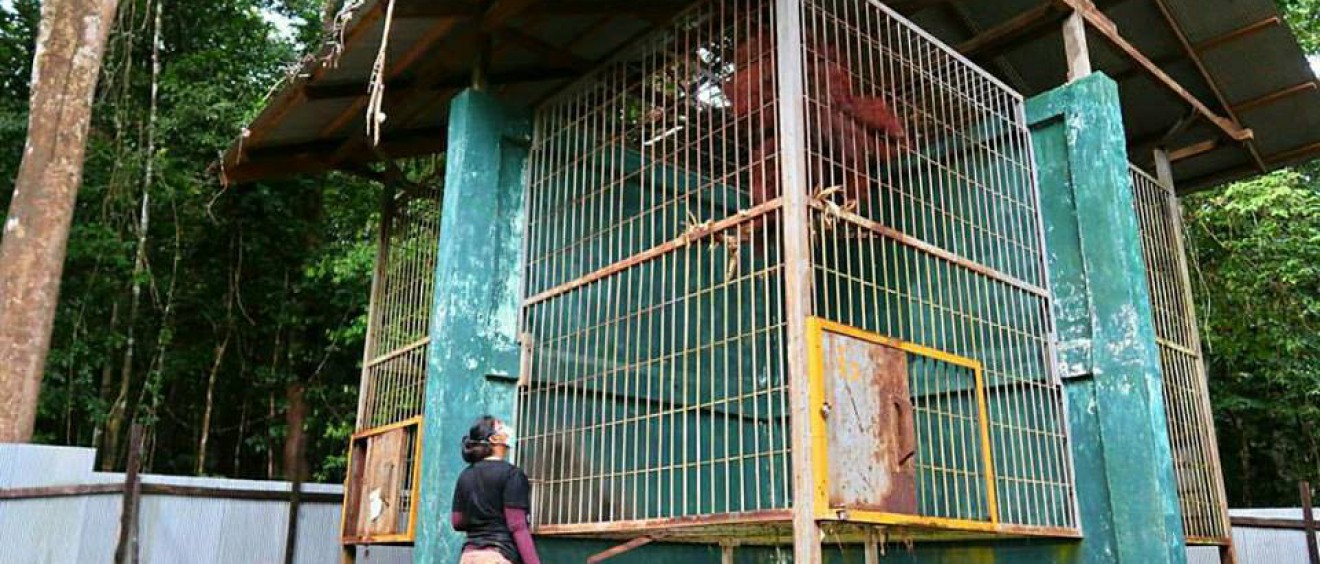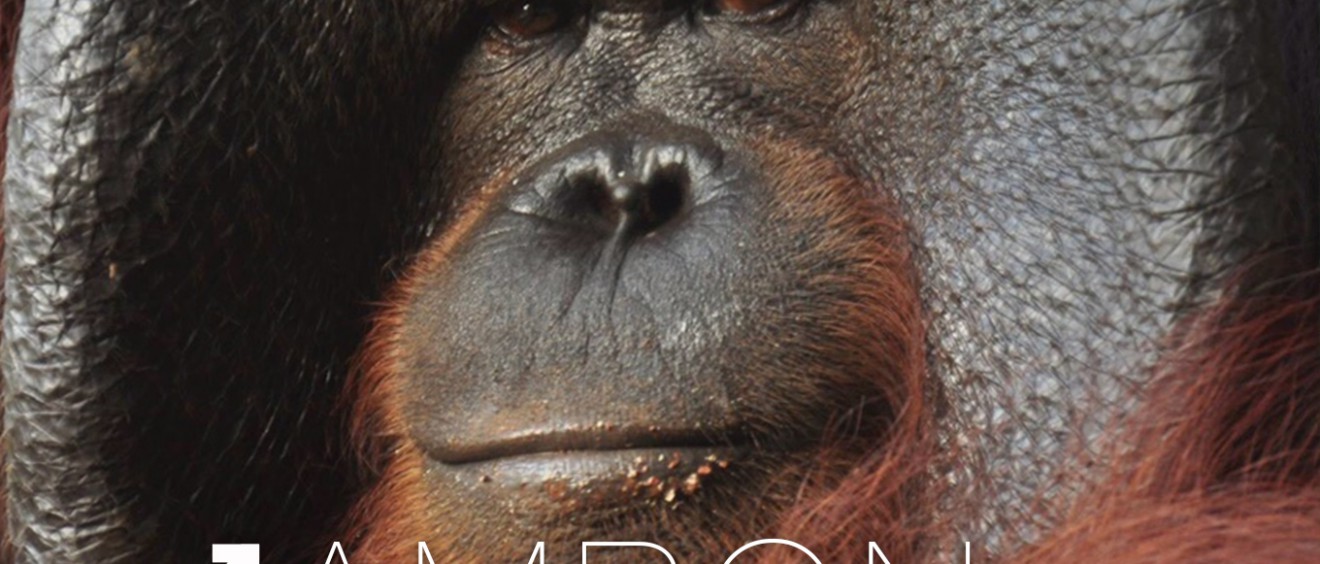I started off my journey to Kalimantan shouldering that curiosity. Shortly before landing, I saw the lush green forest of Kalimantan for miles and miles away. A sight that I have seen in National Geography. There were also a number of coal mines that I saw from above. The drive from the airport to the base camp of Ape Defender was around an hour and a half. It was very exciting when I was briefed about the forest by the Captain of Ape Defender, Paulinus. Up until he told me, that coal, once they start burning, it takes years before they burn out and even rain water cannot stop them from burning, I did not know. That is how forest fires happen. A fact that I just found out!
Upon reaching the COP Borneo base camp, I was not only greeted by the team who worked there but also a number of wild hornbills who flew high above the skies which instantly put a smile on my face. The following day, I was introduced to the beautiful orangutans who were inhabitants of the rehabilitation centre. There were Michelle and Uci who stayed in one enclosure. Michelle I came to realize was slightly cheekier compared to Uci. Next, I was introduced to Bonti and Owi. These two little ones are able to make their own nest in forest school. There were Septi and Happi. Septi acts as a surrogate mother to Happi. Memo, a female orangutan that cannot be released back into the wild because she has been diagnosed with Hepatitis. There was Debby who loves pulling anything that is close to her cage. Therefore, she is one of those orangutans whom one has to be aware of while working with. I was then introduced to Ambon, a handsome male orangutan. Dandy, a sunbear that was also rescued resided there together with the orangutans. Last but not least, Popi, the sweetheart of the team at COP Borneo and social media.
These orangutans were all rescued and are going through rehabilitation before they can be released back to the wild. It is not an easy process but with a team of committed and dedicated people who want a brighter future for these souls, it is worth all the time and effort. Daily activities at COP Borneo comprises of feeding the orangutans twice a day, cleaning their cages and giving medicine or immune boost for the orangutans that are unwell or weak. The orangutans are fed watermelon, Salak fruit, bananas, pumpkins, oranges, and papayas.
As a vet intern, I followed drh. Ade for daily rounds. As a vet I learned it is important to observe the eating habit of the orangutan during feeding time. By observing their eating habit, it is possible to determine if they are healthy or unwell which is vital for the care of an orangutan. I also learned the technique of drawing blood from an orangutan during a routine physical examination that was done during my intern there. The many things performed during a routine physical examination were measuring the length of their body from head to legs. This is done for identification purpose and to also monitor their growth from time to time.
The fun part was trying to get the little ones, Owi, Bonti, Happi and Popi their fingerprints for data purposes. Owi refused to have his fingers borrowed for the prints and we all had a good time of trying and forcing him as well as Bonti and Happi. It was very much easier getting Uci and Michelle’s fingerprints! They were so willing and cooperated well. It was then that I realized much more than before that they each had characters and personality. I also learned the different types of sedatives used to sedate an orangutan and methods of handling a sedated orangutan. Drh Ade was very kind enough to teach and allow me to draw blood from Dandy, the rescued sun bear at COP Borneo.
There was a very special bond that I think I was truly blessed to witness during my intern. It was between Wety and Popi. Popi, who lost her mother at a tender young age and was fortunately rescued by the team and Wety, a young videographer from the island of Java who volunteered to be Popi’s babysitter. From the outside world, it is easy for an individual to say “Aww so cute, can I take a picture with an orangutan?” Do they really know how a baby ends up at a rehab centre? Sadly, many are still ignorant to this vital fact. I used to love watching how Popi clung on to Wety. Literally, Wety was her mom.
Popi needed 24 hour around the clock care. Feeding times were 8 times a day. If someone else was taking care of Popi and Wety walked passed, Popi would start crying wanting Wety to carry her. Tirelessly, Wety would prepare Popi’s milk daily and would teach her how to hang on ropes and small branches. As safe as it was, Popi never liked it and always cried. I admired how Wety was so patient in teaching Popi how to be an orangutan. They had a language of their own. It was called love. Popi’s place of comfort was in Wety’s arms. Never had I met such a person personally who had dedicated her time to baby sit this little one.
I had an opportunity to baby sit Popi one day when Wety was called on a videographer duty at the nearby village. When Popi cried wee hours in the morning, I mixed milk and fed her. Next morning I woke up to the hot water flask being left opened. Only then did I realized I was half asleep mixing her milk the previous night and forgot to close the flask and I laughed to myself for being silly. When she cried again around afternoon and I went close to her, she immediately held her hands up to me to be carried and that was a priceless moment for me. It was my first time having her cling on me. I smiled inside and then prepared her milk.
The excitement on getting into a tiny little boat was great. ‘Way Back Home’, that was what the boat was called. It transports us to the island monitoring post. This is a small cabin in the midst of the cocoa plantation that overlooks the pre-release island where 10 orangutans were stationed. This island is where these pre-release candidates survive all by themselves and make nest and learn survival skills from each other. This island is monitored 24 hours a day and 7 days a week by the team. I was fortunate enough to be able to partake in the monitoring of the orangutans as well doing a physical examination on one orangutan that was slightly less active than the rest of them. Thankfully he was alright and there was nothing to worry about him. (Charisha_Orangufriends)



